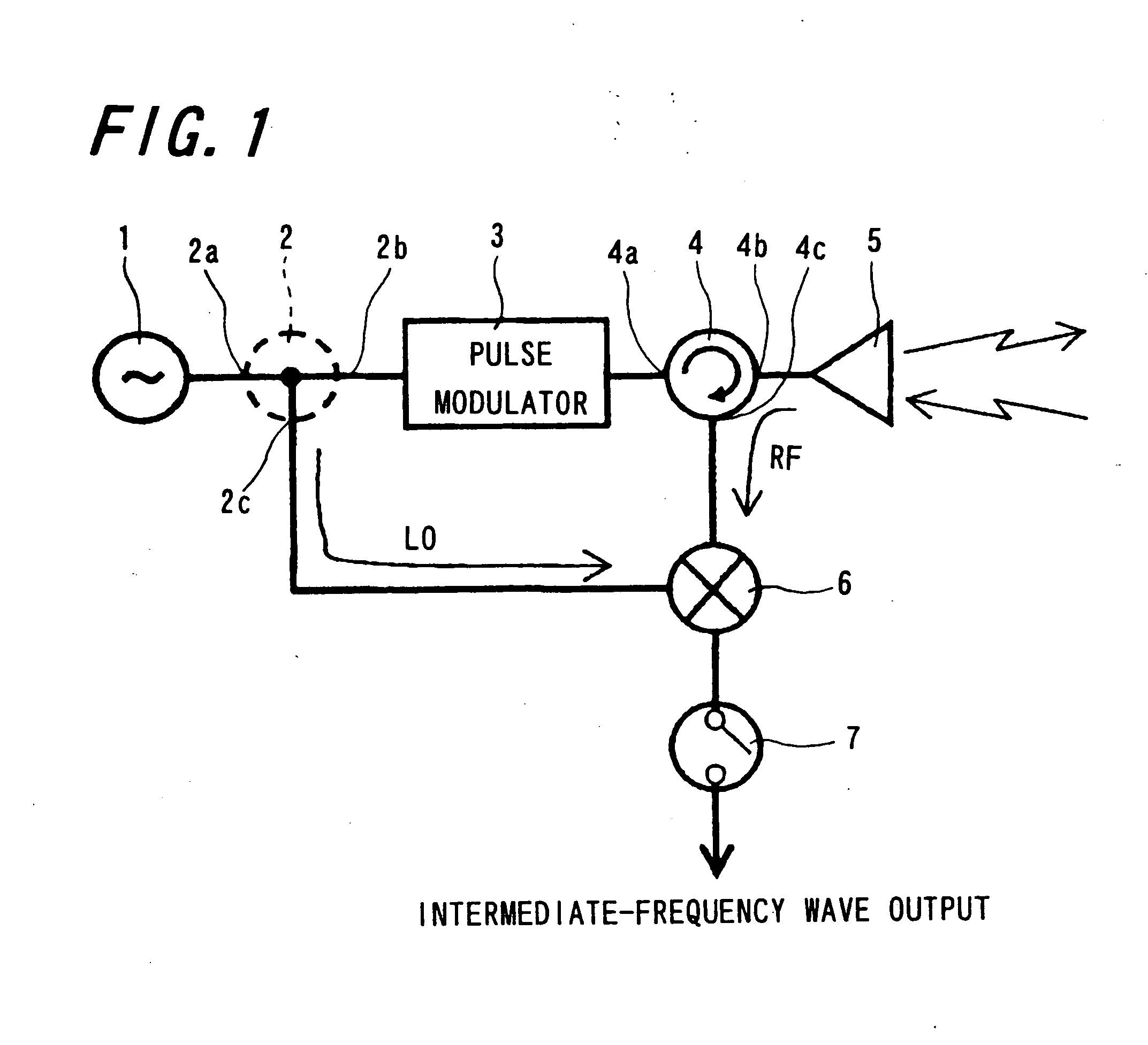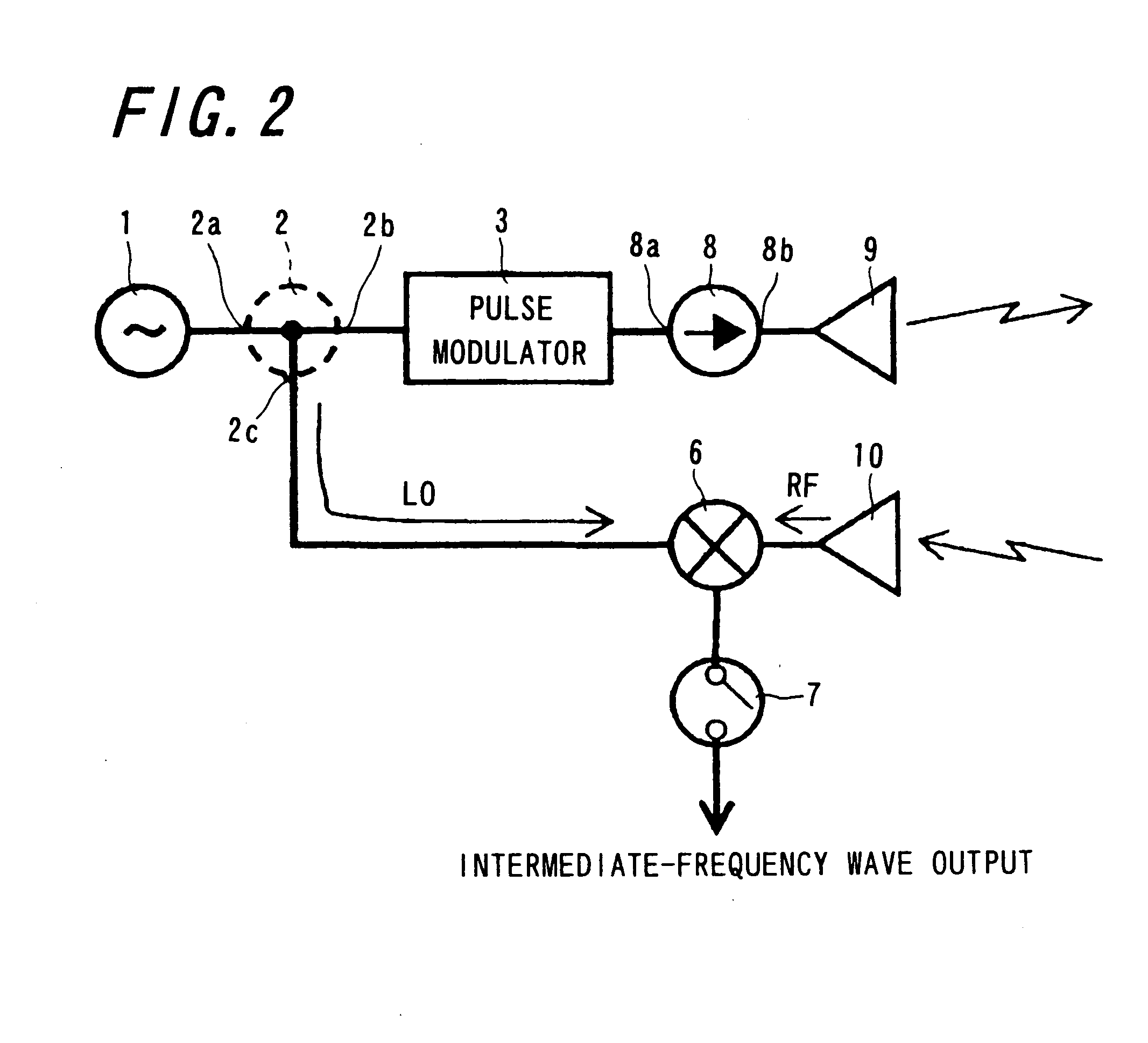High-frequency transmitting/receiving apparatus, radar system having the same, and vehicle and small boat equipped with the radar system
a high-frequency transmitting/receiving apparatus and radar technology, applied in the direction of instruments, waveguides, measurement devices, etc., can solve the problems of reducing the reception capability, affecting the operation of the vehicle, so as to reduce the influence of switching noise occurring in the switching device and simple configuration
- Summary
- Abstract
- Description
- Claims
- Application Information
AI Technical Summary
Benefits of technology
Problems solved by technology
Method used
Image
Examples
working example
[0408] As an working example, a millimeter-wave radar was constructed that has such a circuit configuration as shown in FIG. 10A. The NRD guide, which is a principal component constituting the millimeter-wave signal transmitting section of the millimeter-wave radar, is fabricated as follows. As shown in FIG. 18, as a pair of parallel plate conductors 41 and 42, two pieces of 6 mm-thick Al plates are disposed at an interval a of 1.8 mm. Between the Al plates is interposed a dielectric line 43 made of cordierite ceramics having a relative dielectric constant of 4.8. The dielectric line 43 has a sectional profile of 1.8 mm in height and 0.8 mm in width. Moreover, the millimeter-wave circuit constituting the millimeter-wave signal transmitting section is configured as shown in FIG. 16.
[0409] The capacitor 35 employed in the millimeter-wave radar is designed as follows. The correction capacitance value C0 of the capacitor 35 connected in parallel with the signal selector switch 34 is de...
PUM
 Login to View More
Login to View More Abstract
Description
Claims
Application Information
 Login to View More
Login to View More - R&D
- Intellectual Property
- Life Sciences
- Materials
- Tech Scout
- Unparalleled Data Quality
- Higher Quality Content
- 60% Fewer Hallucinations
Browse by: Latest US Patents, China's latest patents, Technical Efficacy Thesaurus, Application Domain, Technology Topic, Popular Technical Reports.
© 2025 PatSnap. All rights reserved.Legal|Privacy policy|Modern Slavery Act Transparency Statement|Sitemap|About US| Contact US: help@patsnap.com



